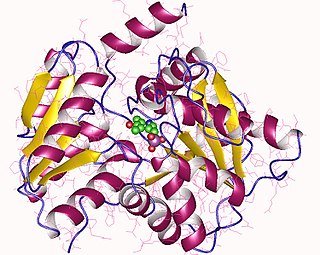| phenylserine aldolase | |||||||||
|---|---|---|---|---|---|---|---|---|---|
| Identifiers | |||||||||
| EC no. | 4.1.2.26 | ||||||||
| CAS no. | 37290-60-1 | ||||||||
| Databases | |||||||||
| IntEnz | IntEnz view | ||||||||
| BRENDA | BRENDA entry | ||||||||
| ExPASy | NiceZyme view | ||||||||
| KEGG | KEGG entry | ||||||||
| MetaCyc | metabolic pathway | ||||||||
| PRIAM | profile | ||||||||
| PDB structures | RCSB PDB PDBe PDBsum | ||||||||
| Gene Ontology | AmiGO / QuickGO | ||||||||
| |||||||||
The enzyme phenylserine aldolase (EC 4.1.2.26) catalyzes the chemical reaction
- L-threo-3-phenylserine glycine + benzaldehyde
This enzyme belongs to the family of lyases, specifically the aldehyde-lyases, which cleave carbon-carbon bonds. The systematic name of this enzyme class is L-threo-3-phenylserine benzaldehyde-lyase (glycine-forming). This enzyme is also called L-threo-3-phenylserine benzaldehyde-lyase. It employs one cofactor, pyridoxal phosphate.









